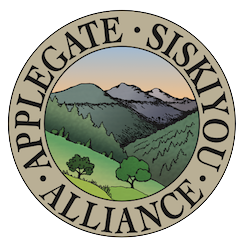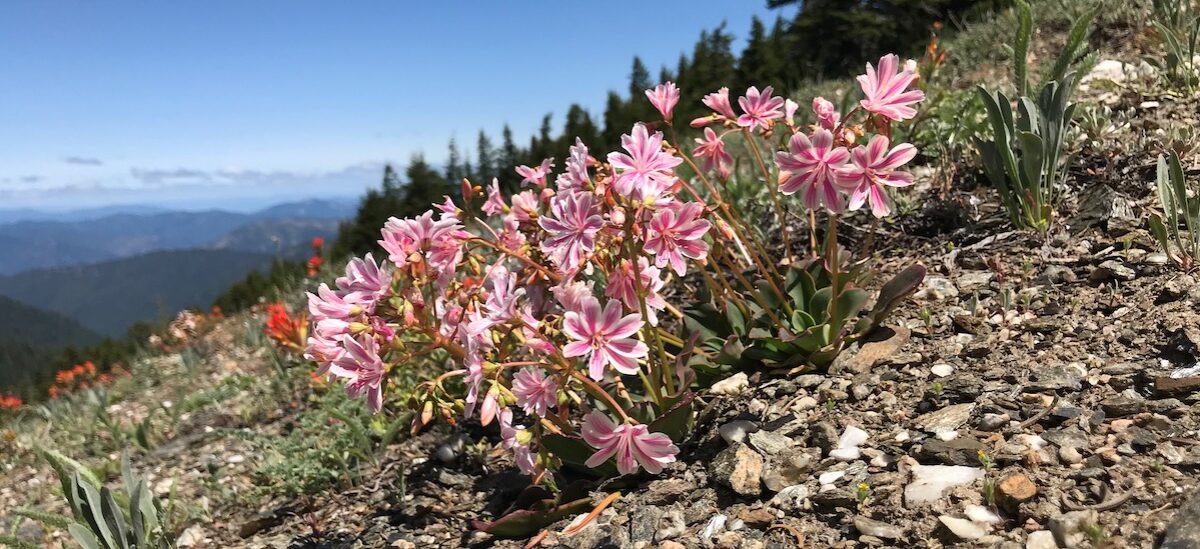
The National Environmental Policy Act (NEPA)
The National Environmental Policy Act (NEPA) is one of our nation’s most important environmental laws and it has successfully been used for decades to infuse the public interest into the public land management process. NEPA encourages public accountability, scientific rigor, and collaboration. It requires federal land managers to solicit public input, consider public comments, disclose the impacts of proposed management activities and conduct a detail scientific analysis of effects for all major land management activities.
NEPA has consistently made federal land management projects more thoughtful, innovative, environmentally responsible, scientifically credible and socially acceptable. ANN believes that NEPA should be applied to all significant federal land management projects, especially those with potentially adverse ecological impacts or some level of scientific uncertainty.
Under the direction of the the Trump administration, many government agencies are being pressured to streamline the NEPA process, eliminate meaningful public comment and reduce scientific review for land management projects. The goal is to expedite resource extraction, reduce regulation, and promote industrial land management activities on public lands.
The Integrated Vegetation Management Project for Resilient Lands

In response, the Medford District BLM has been working to increase timber production, while reducing public input and environmental analysis. To achieve these goals, the agency is working on the Integrated Vegetation Management for Resilient Lands Project (IVM). This project is being proposed under a Programmatic NEPA approach, which would allow the agency to implement timber sales and other activities, across a very broad landscape, without additional, site-specific environmental review or public comment.
As currently proposed, all action alternatives in the IVM Project would allow the agency to implement an extensive commercial logging and road building program in Land Use Allocations such as Late Successional Reserves (LSR), Areas of Critical Environmental Concern (ACEC), Research Natural Areas (RNA), Northern spotted owl habitats, and other areas set aside to protect southwestern Oregon’s incredible biological values and biodiversity.
Alternative C, the Adapted Rogue Basin Strategy:

Alternative C, the Adapted Rogue Basin Strategy Alternative, was designed by the BLM to implement the Rogue Basin Cohesive Forest Restoration Strategy, a plan proposed by the Nature Conservancy and the Southern Oregon Forest Restoration Collaborative (SOFRC).
As currently designed, Alternative C proposes commercial logging throughout BLM land in southwestern Oregon, including numerous Roadless Areas, Areas of Critical Environmental Concern (ACEC), Late Successional Reserves (LSR), Lands with Wilderness Characteristics (LWC) and other important conservation areas.
This proposal would include the conversion of mid- to late-successional, closed-canopied forest, into dramatically more open forest. This could include logging stands to as low as 30% canopy cover with “group selection openings” of up to 4 acres, in up to 20% of a targeted stand. In some locations, Northern spotted owl habitat would be logged, downgrading or removing suitable habitat conditions. Late Successional Reserve and Riparian Reserves would also be commercially logged under this alternative.
As currently designed, Alternative C proposes more logging and road construction than any other alternative. This would include up to 4,000 acres of commercial logging, and up to 10 miles of new road construction per year, without public comment or environmental review. Over a 10-year period, Alternative C would allow up to 25,000 acres of commercial logging and up to 90 miles of new road construction, all without public comment or environmental review.
Alternative D, the Resilient Vegetation Patterning Alternative

Alternative D is very similar to Alternative C. It would allow up to 4,000 acres of commercial logging and 10 miles of new road construction per year without public comment or environmental review. The 10 year maximum would include up to 25,000 acres of logging and 80 miles of new road construction. Late Successional Reserve and Riparian Reserve logging would be allowed, Northern spotted owl habitat could be downgraded or removed, canopy cover could be reduce to as low as 30% with “group selection,” and openings up to 4 acres could be implemented in up to 20% of a targeted stand.
Alternative B, 2012 IVM Approach/Northern Spotted Owl Retention
Alternative B would allow up to 2,500 acres of commercial logging and 5 miles of new road construction per year without public comment or environmental review. The 10 year maximum would include up to 25,000 acres of commercial logging and 40 miles of new road construction. This alternative would allow logging in Late Successional Reserves in stands less than 80 years of age. Riparian Reserve logging would also be allowed. Canopy cover could be reduced to as low as 30% with “group selection openings” up to a half acre and up to 15% of a targeted stand.
Alternative A, Strategic Fuels (Operations and Protection)
Although this alternative was loosely designed utilizing the public comments provided by Applegate Neighborhood Network, we cannot support this alternative as it is currently designed, and many of our concerns are not addressed by this alternative. The alternative would allow up to 2,000 acres of commercial logging per year without public comment and environmental review. No new road construction would be allowed. Over the course of 10 years as much as 17,000 acres of commercial logging could be implemented under this alternative. Treatments would be allowed within a 1/4 mile of “communities at risk” and in “operationally strategic fire management features.” No group selection openings would be allowed and only plantations less than 60 years of age would be thinned.
Amended Alternative A, Strategic Fuels and Plantations

Currently ANN is supporting an Amended Alternative A, which would focus on strategic fuel reduction treatments (non-commercial thinning and prescribed fire) within a 1/4 mile of communities and in plantation stands under 60 years of age. Fuel reduction treatments should retain patches of chaparral unless it specifically threatens a structure or critical infrastructure. Oak woodland would also be largely untreated and oak woodland structure would be retained. Thinning would focus on reducing density in conifer stands and creating fire-resistant forest stand structure within 1/4 mile of communities. This buffer could be utilized in wildland fires to protect communities and provide a safe location for fire crews to operate.
Plantation stands have also been shown to sustain the highest levels of fire severity in regional wildfires and are the most heavily altered habitats within the planning area. Plantation stands less than 60 years of age should also be targeted with fuel reduction treatments to support fire resistance and to protect nearby native forest stands.
This alternative would allow no commercial logging or road construction without public comment or environmental review. We believe these activities and the level of impact they create should require a full NEPA analysis, including meaningful public comment periods, public involvement, the disclosure of impacts, a full environmental review and a credible scientific analysis of effects.
The Medford District BLM is soliciting public comments on the IVM Project until November 18, 2019. Please consider the talking points below when commenting on this project.
- Support the Amended Alternative A proposed by the Applegate Neighborhood Network
- Require all commercial logging and road construction to undergo a full NEPA analysis, including public comment, public involvement, the disclosure of impacts, scientific analysis and environmental review.
- The proposed Amended Alternative A is the only proposed action alternative appropriate for inclusion in a Programmatic EA. All other alternatives should require analysis through a full Environmental Impact Statement (EIS) due to significant impacts, scientific controversy and project complexity.
- Agency analysis must consider the impacts associated with project activities, including increased sedimentation and water quality impacts, impacts to late successional habitats, Northern spotted owl habitat, increased fuel loading, increased fire risks, stand drying, accelerated overstory mortality, increased bark beetle mortality and recreational values.
- The currently proposed Late Mungers Project (in the Williams, Murphy and Deer Creek watersheds), which is “tiered” to the still unapproved IVM Project is pre-decisional and planning should be immediately discontinued. The Late Mungers Project would include commercial logging in a large block of Late Successional Reserve, and the level of potential impact associated with this project requires independent NEPA analysis.
- Comments need not be technical or scientific. Please just write the BLM and let them know how you value the area, how you use or relate to the area and why you support conservation on public lands.
Submit your comments:
Online at: https://go.usa.gov/xmuJV
By email: blm_or_md_ivm@blm.gov
By Mail or Delievery:
Attn: IVM-RL EA
Medford District BLM, 3040 Biddle Road Medford, Oregon 97504
For more information on the project, click here.
Also please attend the upcoming BLM open house to discuss the project at the Jackson County Expo, Mace Watchable Wildlife Building 4:30-7:00 PM Thursday, November 14, 2019. Make your concerns about the ecological impacts of the IVM Project heard with BLM staff at the open house.


Please stop these devastating proposed timber sales. We are living in the Anthropocene and we have a responsibility to change these greedy unsustainable forestry practices.
Private and BLM clear-cut logging practices do more harm than good, despite what commercial logging propaganda wants the public to believe; herbicides sprayed, the logging runoff which contaminates nearby water sources and fish habitat, replanting monocrop tree plantations and undoing generations of wild tree mosaic formations damages the land for generations to come.
Sustainable, selective small logging operations and controlled Winter burns are what our drought afflicted climate needs.
BLM stop the pillage of our public lands for profit and start creating sustainable forest management systems! You’re smarter than this!